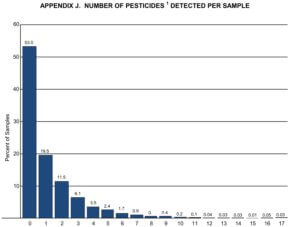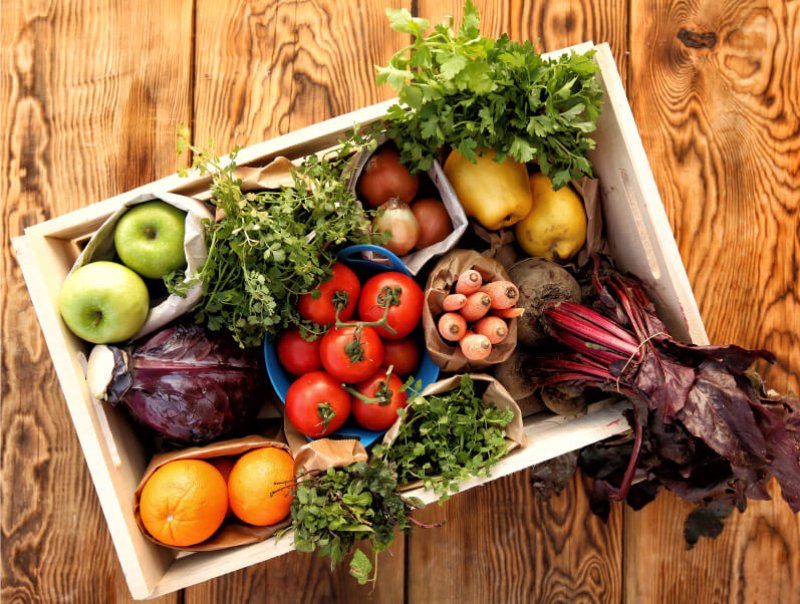More than 99% of [fruits and vegetable] samples tested in the U.S. Department of Agriculture’s Pesticide Data Program had residue levels well below levels established by the Environmental Protection Agency.
The USDA published the 203-page 2017 annual summary on Dec. 17 and said 53% of samples had no detectable pesticide residue (see graph below).

“This report shows that when pesticide residues are found on foods, they are nearly always at levels below the tolerances set by the U.S. Environmental Protection Agency,” the report said.
USDA and EPA work together to identify foods to be tested on a rotating basis, according to a news release.
…
Fresh and processed fruit and vegetables tested during 2017 included applesauce, asparagus, cabbage, cranberries (fresh and frozen), cucumbers, garbanzo beans (canned), grapefruit, kale, lettuce, mangoes, olives (canned), onions, pineapple (canned), plums (dried/prunes), snap peas, sweet potatoes, and tomatoes (canned). Domestic samples accounted for 72.4% of the samples, while 26% were imports, 1.1% were of mixed national origin, and 0.5% were of unknown origin.
[Editor’s note: According to the USDA data, approximately one-half of one percent of foods had pesticides over tolerance levels, which themselves have a built in factor of at least 100x). Of that half percent, more than half the products were imported. So US grown food represented less than one-fourth of one percent above tolerance levels:
“Excluding bottled water, residues exceeding the tolerance were detected in 0.59 percent (58 samples) of the total samples tested (9,785 samples). Of these 58 samples, 24 were domestic (41.4 percent), 32 were imported (55.2 percent), and 2 were of unknown origin (3.4 percent).” For the 10,541 samples analyzed, 53.0 percent of the samples had no detectable pesticides, 19.5 percent had 1 pesticide, and 27.5 percent of the samples had more than 1 pesticide.]
Read full, original article: USDA releases annual Pesticide Data Program summary































